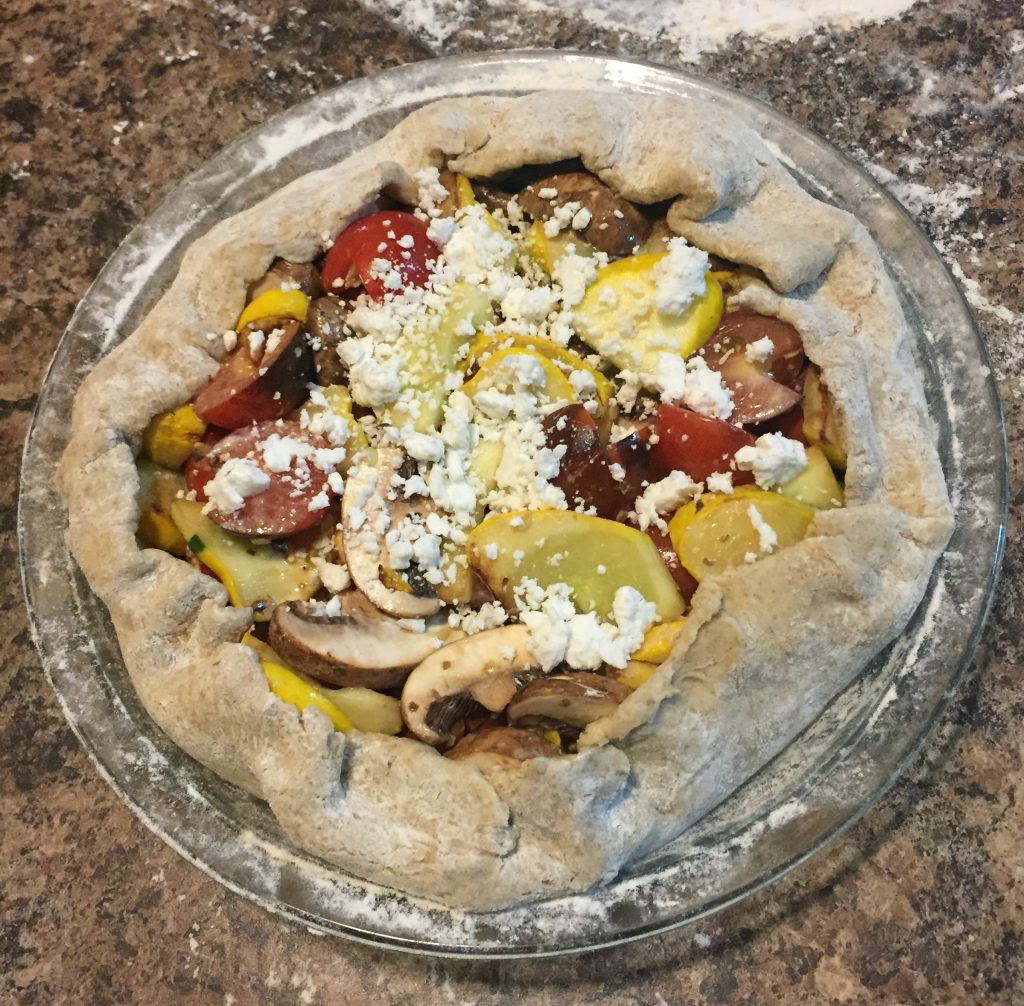
Baking intimidates many people because they think they will mess up their dough if they measure an ingredient incorrectly. This fear is unnecessary. Take a deep breath, remind yourself of all the grandmothers in the world who have eyeballed their homemade cookies for years, and give it a shot. Pie crusts can come in very handy when you want to make a dish that will last more than one meal. Use this crust for sweet or savory foods–it will work either way.
Basic Formula
Flour + Salt + Cold Fat + Ice Water = Pie Crust
Small drinking glass
Large mixing bowl
Rubber spatula (wooden spoon will work if no spatula)
1-cup measure
1/2-teaspoon measure
Pastry blender or food processor (or fork, if you don’t own either of the other options)
Knife
Empty counter space, clean enough to eat off of
Rolling pin
[You’ll also need an oven, eventually, but that part falls beyond the scope of this post.]
Basic Steps
1. Put some water into the freezer to chill. The key to a good pie crust is to keep the fat cold. You can increase your odds by chilling the water before you even start making the dough. Half a glass should be enough.
2. Mix flour with salt. The Joy of Cooking recipe, which is my go-to, calls for 2 1/2 cups flour and 1 1/4 teaspoon salt for a double crust pie. So if you only need the bottom crust, use 1 1/4 cups flour and a little more than 1/2 teaspoon salt. I’ve also used rye flour or spelt flour in place of half the all-purpose, which yielded great results. (That idea comes from this book.)
3. Blend cold fat into flour mixture. The fat can be lard, butter, or shortening, but it needs to be cold. Blending means you want to chop at the fat until it breaks into pieces and those pieces get dusted with flour. (I use a pastry blender, but you can also use a food processor or fork.) Keep at it until the biggest chunks are the size of peas. You don’t need or want uniformity; the larger pieces will melt while baking which will create flakiness in the crust. Go with 4–5 tablespoons of fat if making a single crust; 8–9 tablespoons if double. (I’ve seen this variable change from recipe to recipe.)
4. Add ice water until the dough comes together in a ball. Most recipes suggest six tablespoons of water, but I find that the amount varies according to the type and quality of my flour. I prefer to add a small amount of water from my pre-chilled glass, mix it in, and repeat with tiny amounts until I can pat the dough into a ball.
5. Roll out dough on a lightly floured surface. It helps to mush the dough from a ball to a circle before rolling–this encourages it to maintain a round shape as you roll. If your dough sticks to the countertop or the rolling pin, sprinkle the surface with flour and/or flip the dough over. Keep rolling and adding flour as necessary until the dough is about 1/4 inch thick and 9–10 inches in diameter.
Additional Notes: If using right away, gently drape the dough over a greased 9-inch pie pan and guide it so that it molds along the bottom and sides of the pan. Trim any excess around the edges and use this extra to patch any tears. If you aren’t planning to use the crust immediately, you can fold it and store it in the fridge. You may have to roll it out again because it can tear after chilling, but this is okay.


